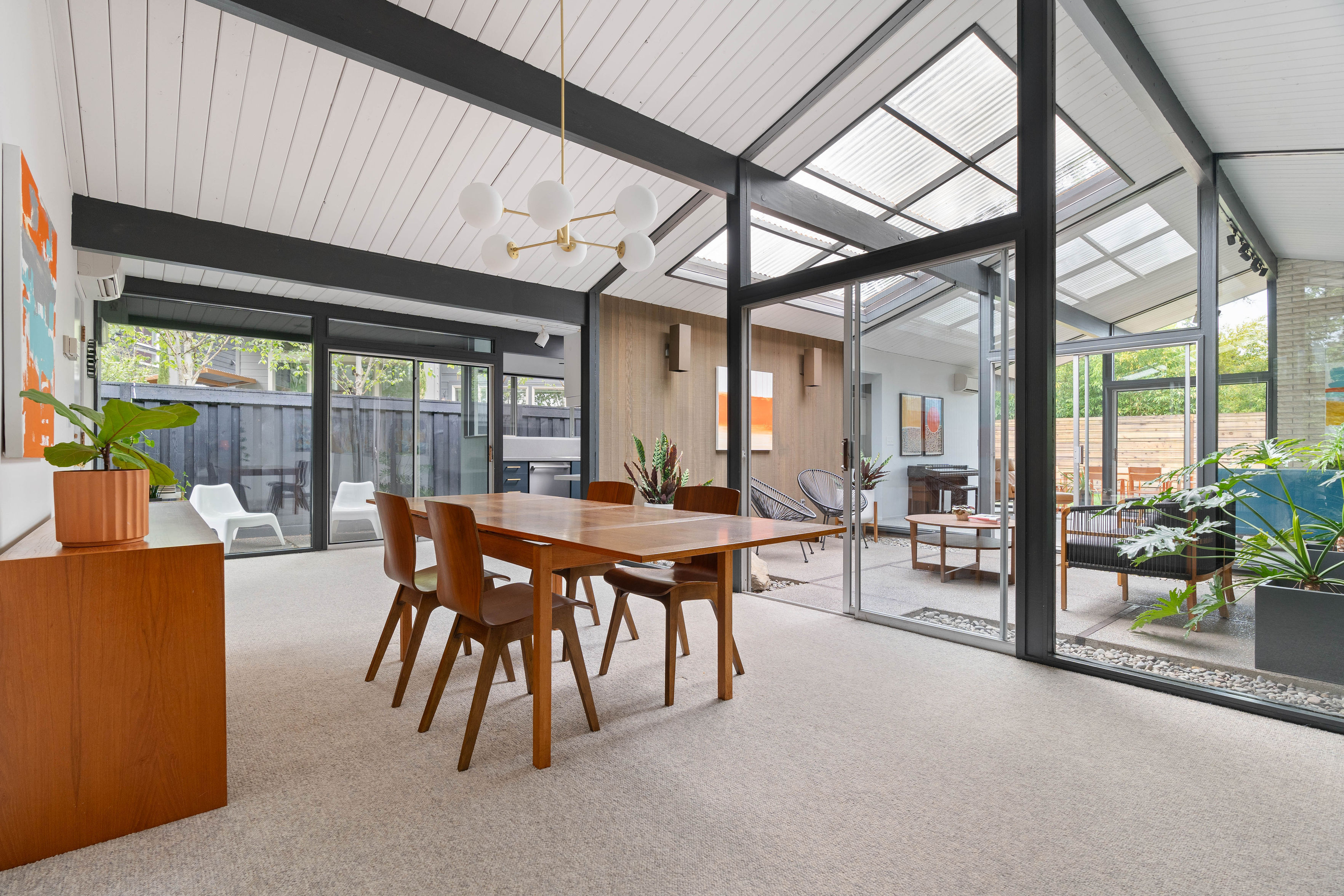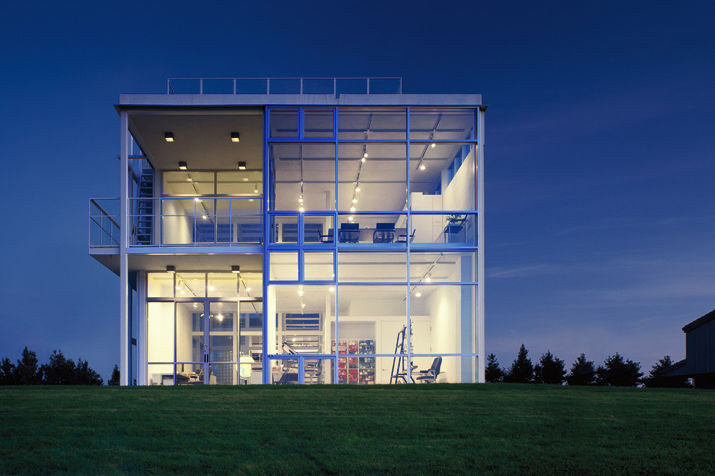
Our 10 Greatest Homes
Given Portland’s sheer volume of fabulous historic homes—plus the quantity of fine architects working today—asking five experts to pick the 10 greatest residences in the city’s history might have sounded the bell for an architectural cage fight. But despite vast aesthetic differences (and deep philosophical discussion about the meaning of “greatest”), the quintet of judges Portland Monthly invited to tackle the task found consensus in just a few hours on not only the top 10 but even a single all-time favorite.
1. Watzek House
John Yeon, 1937 // NW Skyline Boulevard
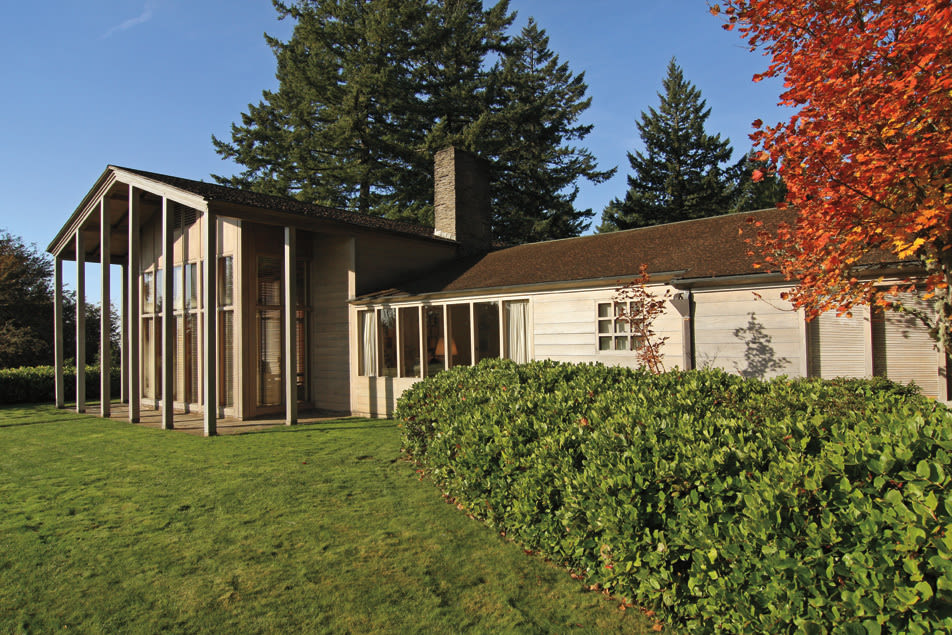
Image: University of Oregon
Unassumingly clad in clear fir tongue-and-groove siding, Portland’s most internationally exhibited and published house might easily be mistaken for a humble barn. But whether you zoom in on details like the beautifully stacked fieldstone foundation and the crisply minimal eave line or enjoy a full tour of the interiors, paneled in a symphony of finely crafted Oregon noble fir, western hemlock, and Oregon oak, a close look at the Watzek House leaves little doubt why Portland Monthly’s jury took mere minutes to put it at the top of their list.
Though John Yeon gained most of his architectural education in brief stints at the offices of Portland masters Herman Brookman and Albert E. Doyle, he emerged at the age of 26 a near-Mozartian wunderkind. His first built design, for the lumber baron Aubrey Watzek, became the defining early work of our only true architectural movement, the Northwest Regional style of modernism. Yet it also stood far apart from all the period’s fads. As European and American architects of the time were abandoning interior walls and mouldings for the cool, clean lines and open plans of the International style, Yeon fearlessly turned the Watzek House into a “sequence of revelations”—each hallway and room imbued with deeply sophisticated and often playful interpretations of Venetian, English, and even Asian styles. Yet, in this case, fusion is in the details: the pages of construction drawings articulating the house’s every joint numbered more than 600.
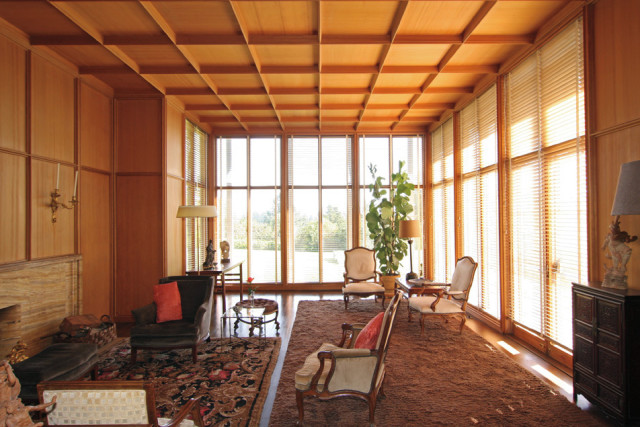
Image: Jack Liu
The Museum of Modern Art exhibited the Watzek House twice, the curators admiring how “the quiet sweep of simple forms harmoniously complements the fine Western landscape.” The home appeared in numerous American and European journals. Fearing new owners might mar his greatest work with clumsy remodels, Yeon bought the house himself in the ’70s. After his death in 1994, the house was donated to the University of Oregon, which formed the John Yeon Center for Architectural Studies the following year. The house is in the final stages of federal approval as a National Historic Landmark—the first Portland residence to achieve such status. After designing a dozen more houses and what is now called the “Rose Building” in Gov. Tom McCall Waterfront Park, Yeon devoted his career to museum exhibit design, historic preservation, and activism to protect the Oregon coast and the Columbia River Gorge.
2. Knapp House
Justus Krumbein (attributed), 1882 // Northwest Portland (demolished)
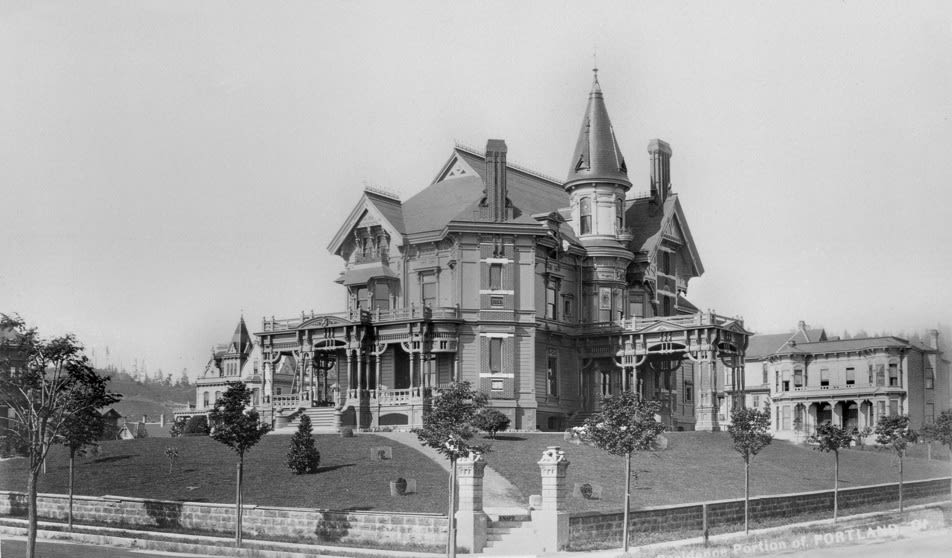
Of the many Victorian houses built during Portland’s first wave of growth in the late 19th century, few achieved the craftsmanship and invention of this one, built by Richard Knapp with a fortune earned selling farm tools. As architect and preservationist John Yeon wrote, “How a building of such high style was conjured up in a land so recently a wilderness will mystify every visitor … It is full of surprises, wit, and folly within a framework of serious grandeur.” The house’s cone-topped tower reached more than three stories high. A trio of chimneys made of brick, stone, and terra cotta pulled off the engineering feat of wrapping around windows. Inside, the house was pure cabinetry, every surface carved and paneled in ash, oak, and maple or covered in gold-embossed Japanese wallpaper and imitation leather. The baronial entrance hall led to 16 more rooms, the most impressive of which was a grand ballroom on the third floor. Yet, for all the house’s architectural achievement and beauty, the Archdiocese of Portland bought it and tore it down in the 1950s to offer more parking for St. Mary’s Cathedral. Portland Monthly’s jury strongly argued for its inclusion as the greatest of the many grand Portland homes lost to the city’s changing whims.
3. Sutor House
Pietro Belluschi, 1938 // NW Skyline Boulevard
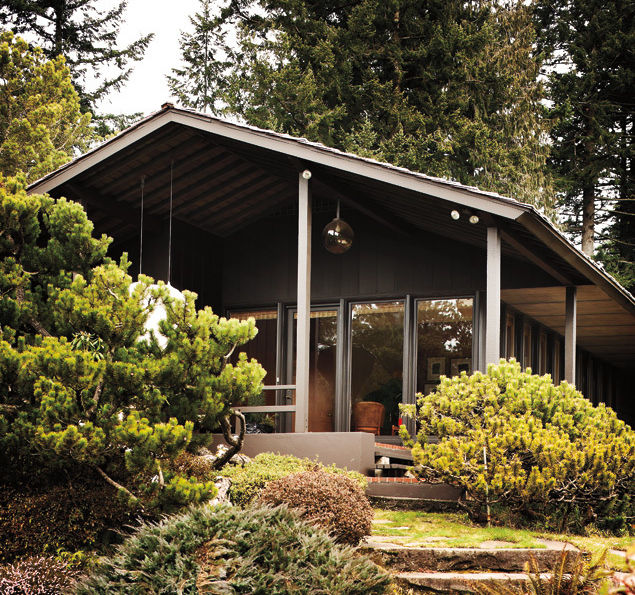
Image: Bruce Wolf
No Portland architect has achieved greater international renown than Pietro Belluschi. His inventively modernist design of the Portland Art Museum in 1932, a series of groundbreaking local churches (St. Thomas More, Zion Lutheran, and others) in the ’40s, and his masterful aluminum-and-glass Equitable (now Commonwealth) Building vaulted him to both a prestigious deanship at MIT and celebrated commissions like Alice Tully Hall at Lincoln Center and the Pan Am Building (with Walter Gropius). But as juror William Hawkins put it, the home Belluschi designed for Jennings Sutor “launched a thousand ships.” Built nearly concurrently with (and just across the street from) the Watzek House, Belluschi’s Sutor House features a similarly simple, almost plain exterior. But inside, comparisons end. Smaller and more open in its plan, and striving for a near-Japanese minimalism in every detail, Belluschi’s design fully embraced the emerging trends of the International style of architecture. Far more influential than the more idiosyncratic Watzek House, the Sutor House established an iconic, but simpler, less expensive standard for other local architects to follow in the blossoming of Northwest Regional style. (Private)
4. Mackenzie House
(now William Temple House) Whidden & Lewis, 1892 // 615 NW 20th Ave
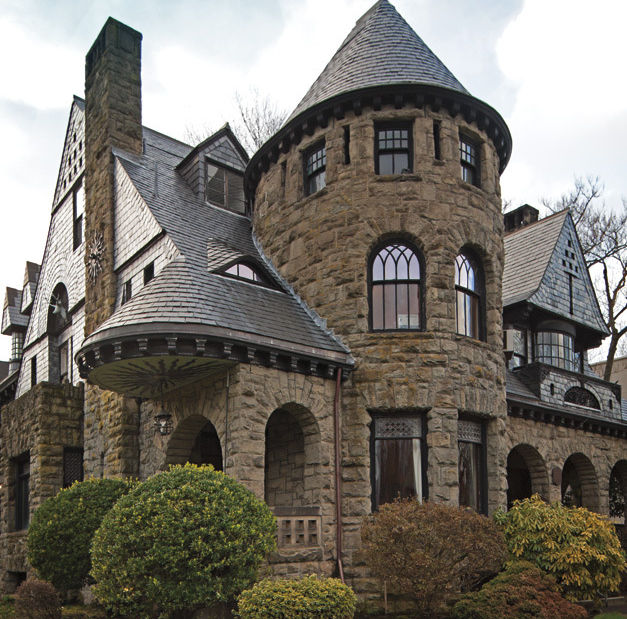
Image: Bruce Wolf
With stately office towers like the Failing Building and the quirky, Renaissance-revival gem of Portland City Hall, Whidden & Lewis set the highest early architectural standard for downtown Portland. The firm proved equally adept at houses, the best of which is now known as the William Temple House. Originally built for Dr. Kenneth A. J. Mackenzie, co-founder of Oregon Health & Science University, the home is Portland’s most stunning example of the Richardsonian Romanesque style, with its trademark medieval-inspired stone arches, cone-topped turret, and wrought-iron details. Despite numerous turns of ownership (including stints as a speakeasy and a flophouse), the home’s interiors still stand among the city’s greatest, graced with oak paneling, cherry bookcases, tile mosaics, tin-embossed coffered ceilings, and a gaslight designed with a bat and serpent—the Scottish symbol for the triumph of medicine over witchcraft. The Episcopalian social service organization William Temple House purchased the home in 1971 and beautifully restored it in the 1990s. (For open house information, call 503-226-3021.)
5. Pittock Mansion
Edward T. Foulkes, 1914 // 3229 NW Pittock Drive
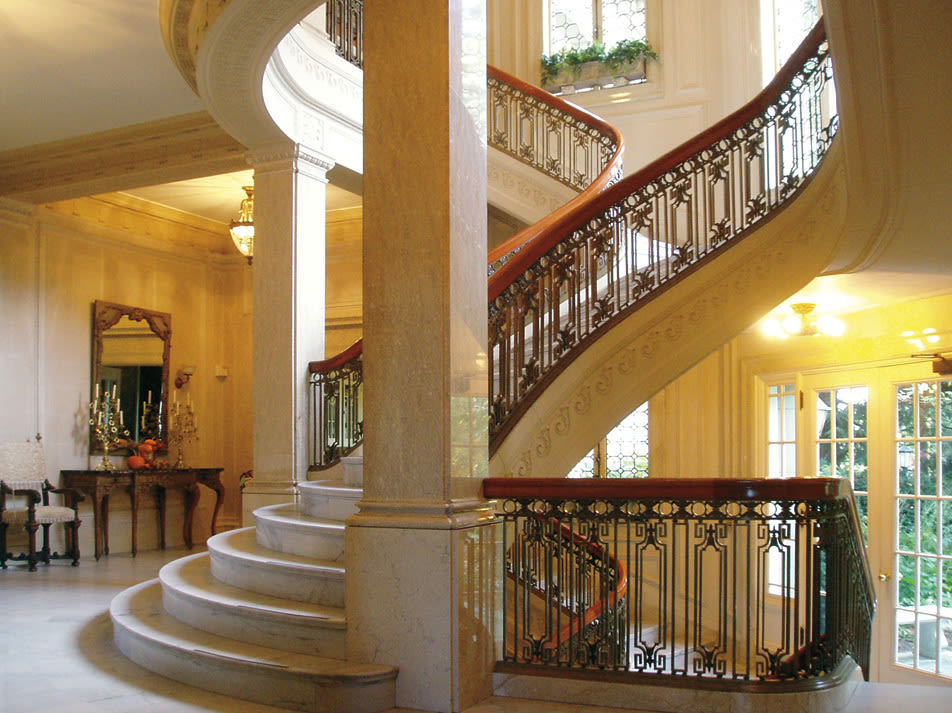
Image: Michael Henley
Any list of Portland's greatest houses would be incomplete without this French Renaissance–inspired sandstone masterpiece. Built by Oregonian publisher and paper-mill magnate Henry Pittock and designed by the prominent San Francisco–based Edward Foulkes, the home grandly reigns over its domain with two wings converging in a massive, elliptical drawing room overlooking the city and the mountains beyond. Nearing the end of his life, Pittock spared no expense, his sense of legacy perhaps best embodied by the family coat of arms carved above the library fireplace. But the house leaves its most lasting impressions in two features: a curving, floating baroque staircase (pictured) that channels both the elegance of Michelangelo and the melodrama of Scarlett O’Hara; and Pittock’s personal bathroom, situated in a windowed turret offering one of the city’s most commanding views. (Open for tours.)
6. M. Lloyd Frank Estate
Herman Brookman, 1924 // Lewis & Clark College Campus
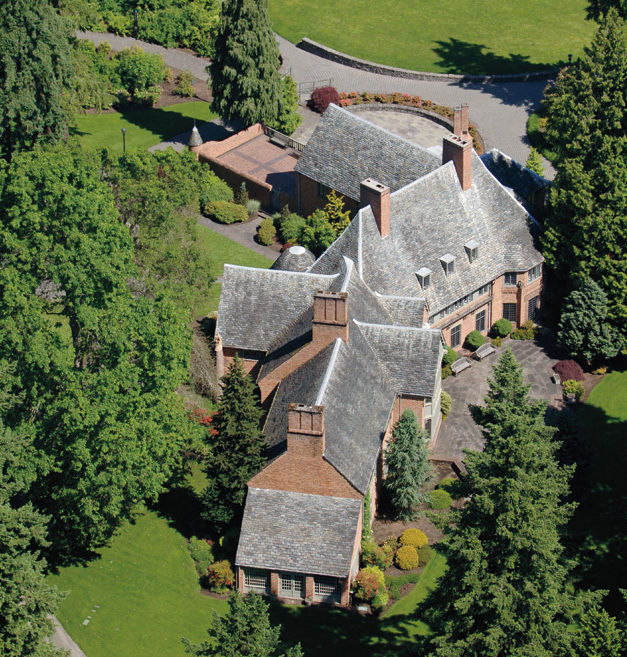
Image: Lewis & Clark College
Among Portland homes, nothing quite matches the merging of graceful period architecture and breathtaking landscape design found in the estate Herman Brookman fashioned for Meier & Frank department store heir M. Lloyd Frank. A classic pre-Depression mash-up of opulence and stylistic eclecticism, every detail invites careful appreciation, from the rustic brickwork (carefully composed to make the house appear to have been built over the ages) to the stunningly engineered hanging stairwell, a feature any red-blooded architect would pine to design even today. Yet, for all of Brookman’s attention to the parts, he never lost sight of the totality. The Frank Estate is ultimately about the experience of space, drawing you through a compression of intimate rooms and expansive grand halls to the crescendo of a eight-acre formal garden framing a view of Mount Hood. After living in the house for only 10 years, the Frank family sold it to Lewis & Clark College in 1942. It now serves as the administrative offices for the college’s president.
7. Cobb House
Albert E. Doyle, 1917 // SW Montgomery Drive
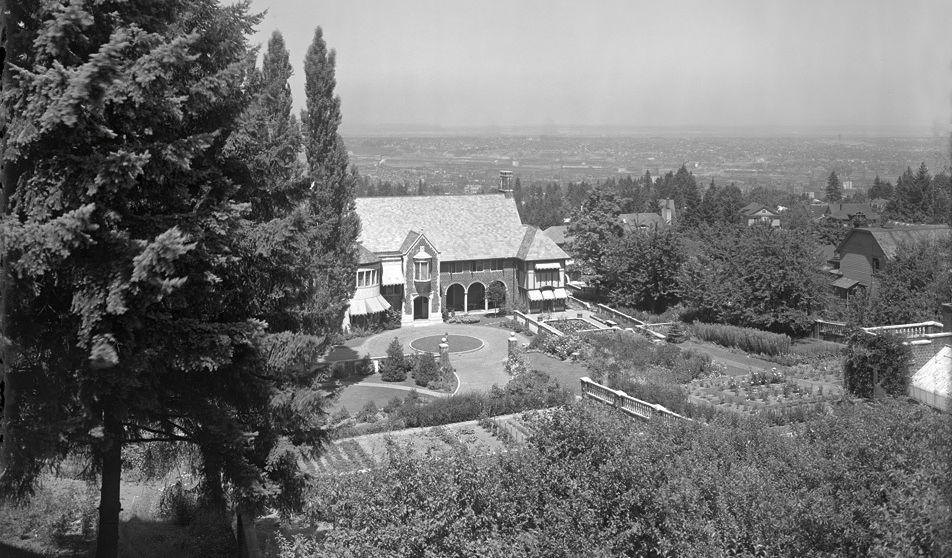
Arguably no Portland architect shaped early Portland so widely as Albert E. Doyle, who designed much of the city’s emerging financial district; our trademark white terra-cotta buildings such as the Meier & Frank Building and Lipman’s (now Hotel Monaco); the earliest buildings of Reed College; and our most-visited civic building, the Multnomah County Central Library. But in the masterful mansion he designed for Dr. Frank J. Cobb, Doyle also gave Portlanders one of their greatest curb views, whether it is seen up close from the front gate on Montgomery Drive or from the city’s popular stair climb to SW Vista Avenue. True to the adaptability that allowed his larger buildings to survive the ages, the Cobb House is a study in flexibility, seeming to live small for a family or large for the grandest of parties, all within a floor plan that gracefully unites indoors and out on a steep, hillside site. In many ways, the home’s most beautiful room is the most modest: a simple, rounded breakfast room overlooking the gardens. (Private)
8. Saul Zaik House
Saul Zaik, 1959 // NW Saint Helens Avenue
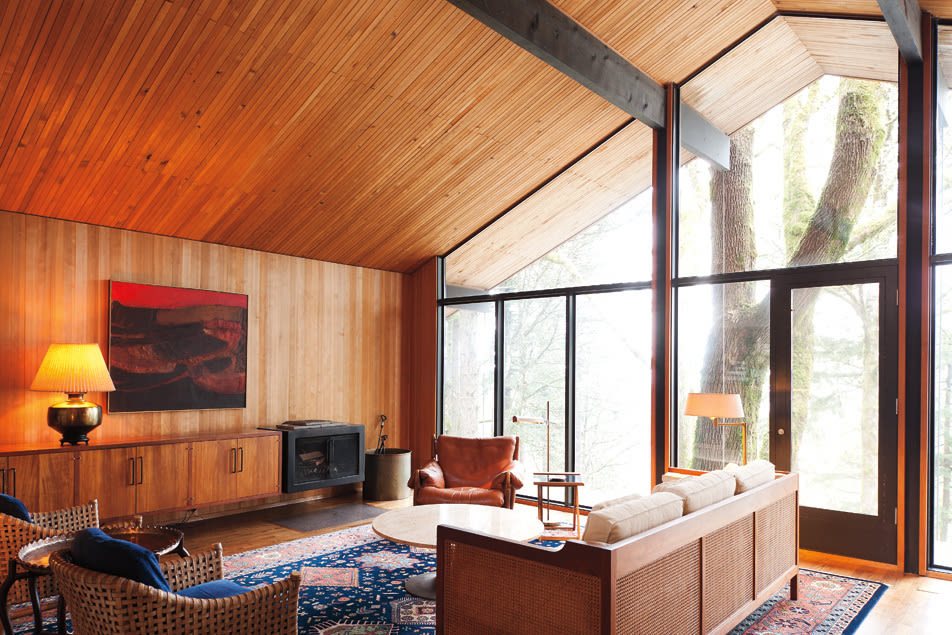
Image: Bruce Wolf
At age 83, Saul Zaik is the last living midcentury Northwest modernist. Over his nearly six decades of practice, he has designed everything from historic renovations of Timberline Lodge to homes in Portland and Salishan for some of the city’s most illustrious families (including one house that sits atop a ship’s mast, for shipbuilder Arnold Zidell). But at heart, Zaik relishes interpreting warm, clean forms of modernism for the Northwest landscape in the local material of wood—and in this pursuit, the home he designed for his family stands as the finest example. The house is really a series of three separate pavilions—living spaces, bedrooms, and the carport—all connected by bridges and pathways. Each room is little more than columns, beams, and planes of glass-and-wood paneling. As simple as a Native American longhouse, but as delicate as leaf, Zaik’s home seems to almost hover above its wooded, hillside site. (Private)
9. Maegley House
John Virginius Bennes, 1914 // SW Kingston Avenue
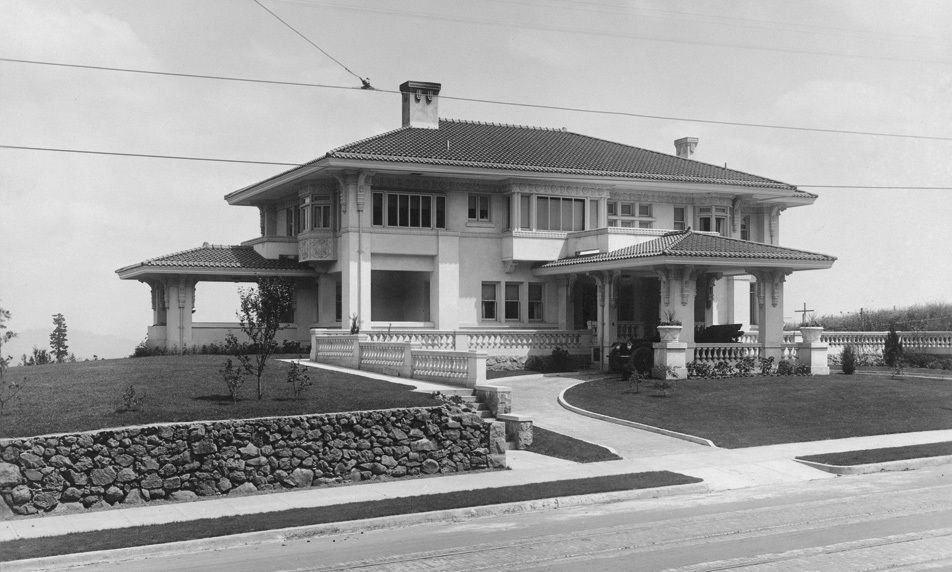
Though the Prairie Style makes frequent appearances in turn-of-the-21st-century McMansion developments, when Louis Sullivan and Frank Lloyd Wright first turned it into a Midwest movement it made only scattered appearances in the Northwest. But a wonderfully distinct example can be found on the edge of Washington Park in this house designed by the Chicago native John Virginius Bennes. To the Prairie-style hallmarks of low-hipped roof and long, hovering eaves, Bennes elegantly integrated an eclectic array of surprises, from the eye-catching, second-story bay windows to the festive, molded stucco reliefs and Mediterranean tile roof. The interior is no less dynamic, with all the major public rooms connecting to each other and to outdoor terraces, with plentiful views over Washington Park and the city. Bennes also designed such local landmarks as the Hollywood Theatre and more than 30 buildings for Oregon State University’s campus, but the Maegley House stands as his true masterpiece. (Private)
10. Rockwood House
David Rockwood, 1986 // Hayden Island (North Shore)
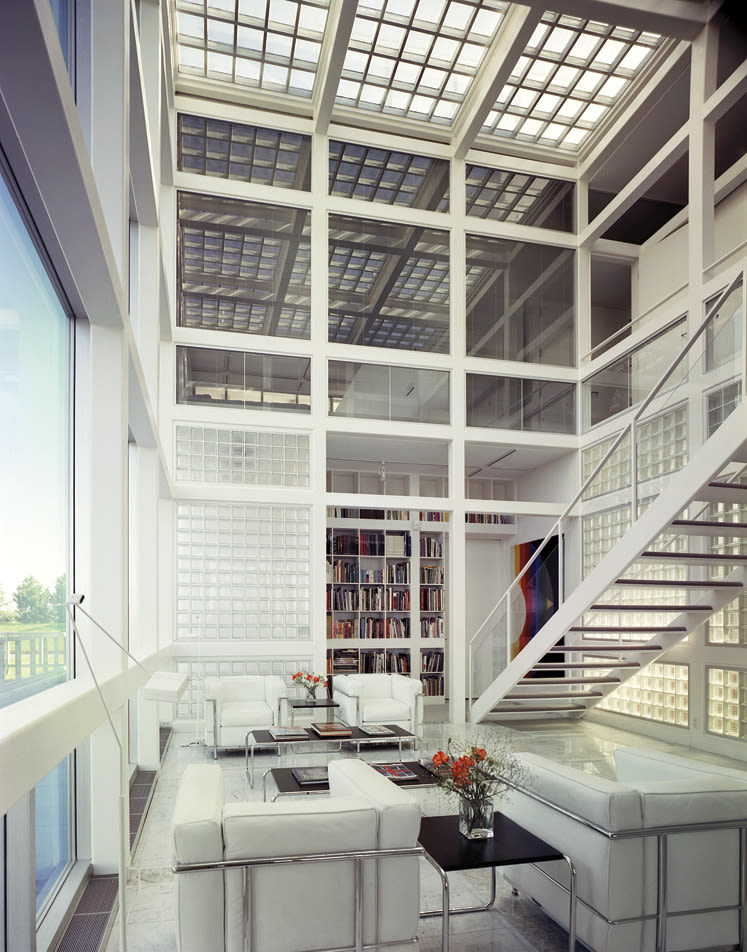
Image: Richard Strode
Not since John Yeon’s Watzek House has a local residence enjoyed so much international attention as the Hayden Island home Portland-born architect David Rockwood designed for his parents. Published in the United States, Europe, and Japan, and featured in noted critic Kenneth Frampton’s book American Masterworks: The Twentieth Century House, Rockwood’s design channels Yeon’s uncompromising craftsmanship by way of the celebrated prefab aesthetic of Charles and Ray Eames. Standing as commandingly as a Venetian palazzo on the Columbia River, the Rockwood House features an exposed steel structural system based on a near-perfect 11-foot, 6-inch grid. Panels of lightweight pumice concrete sandwiching foam insulation (a system Rockwood invented well before “sustainable” wall panels became mainstream) attach to the steel grid to form the exterior walls and roof. The kit-of-parts geometry is so pure that Frampton described it as “neoplatonic.” But for an interior atrium that poetically breaks the pattern, the house creates the peaceful sense of floating in some much larger whole with every view and space framed by the grid. As much inventor as architect, Rockwood now teaches at the University of Hawaii, where he is developing new kinds of solar energy–producing building skins and an accelerating escalator. (Private)



